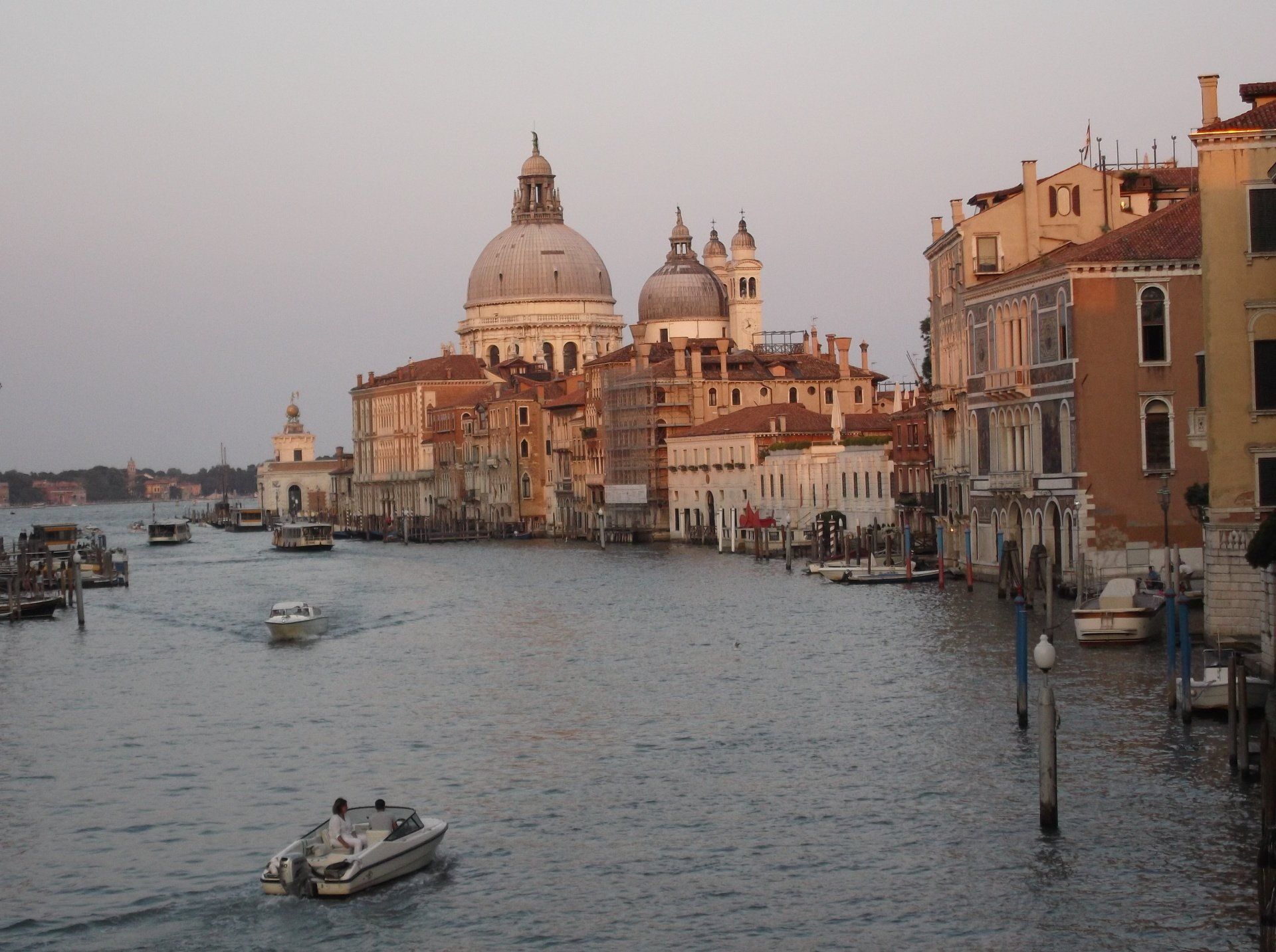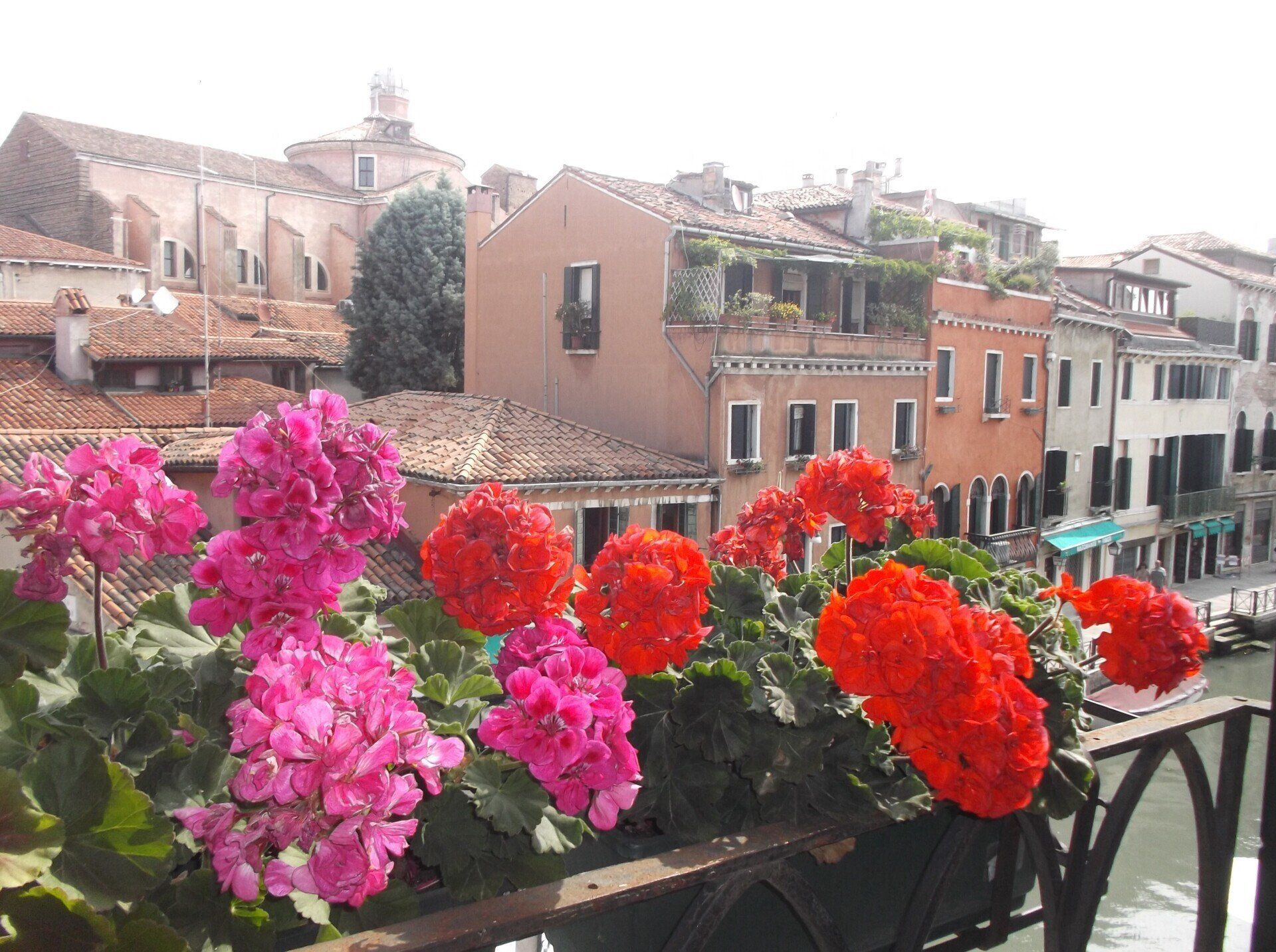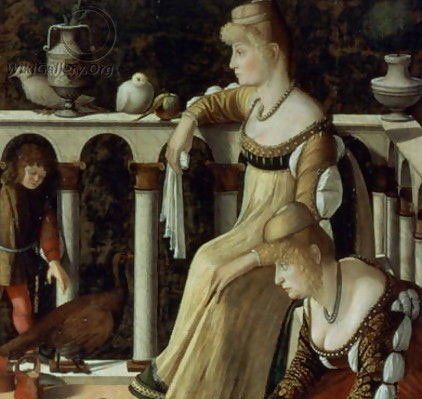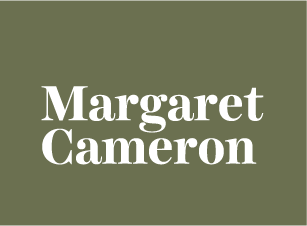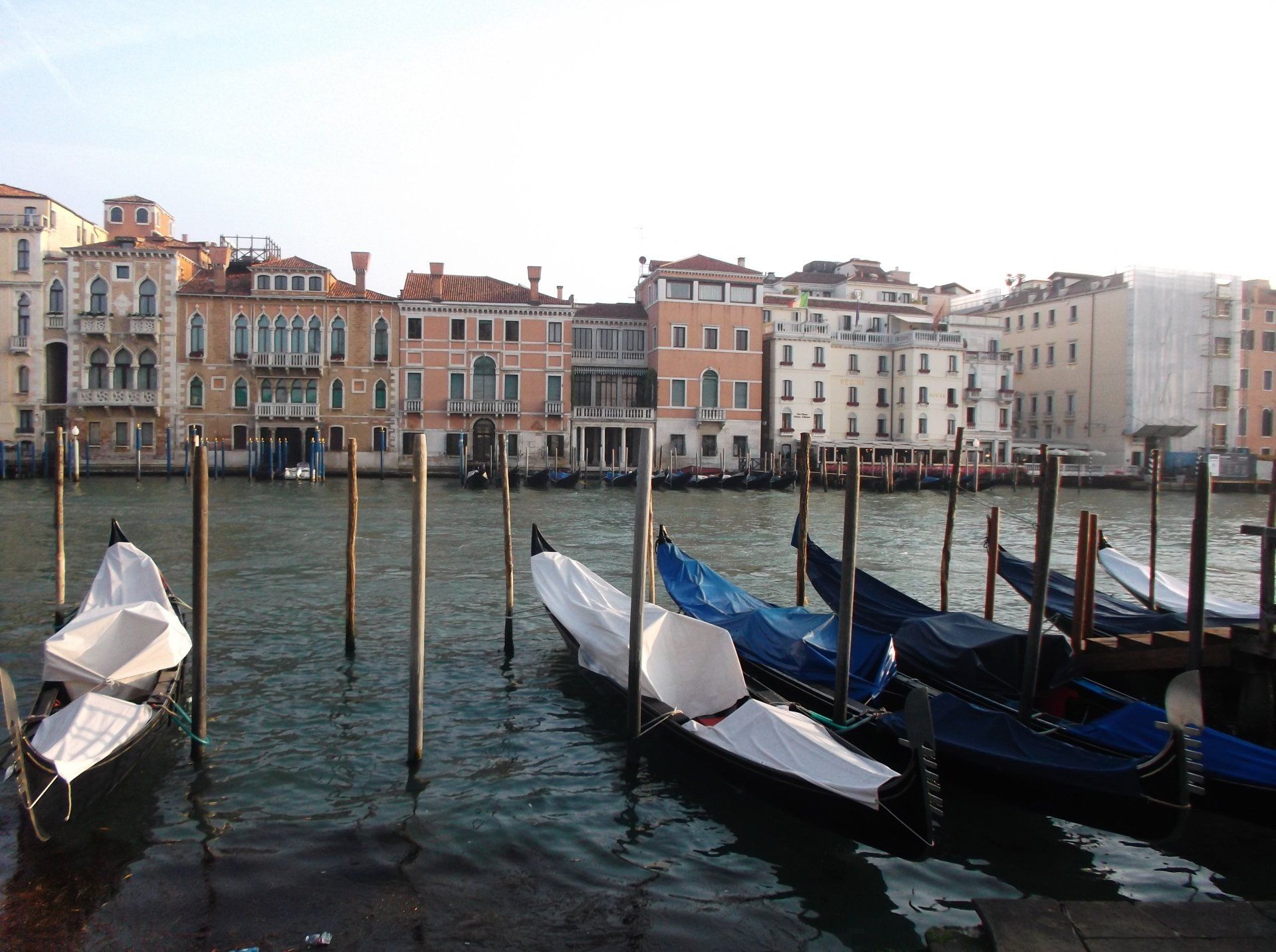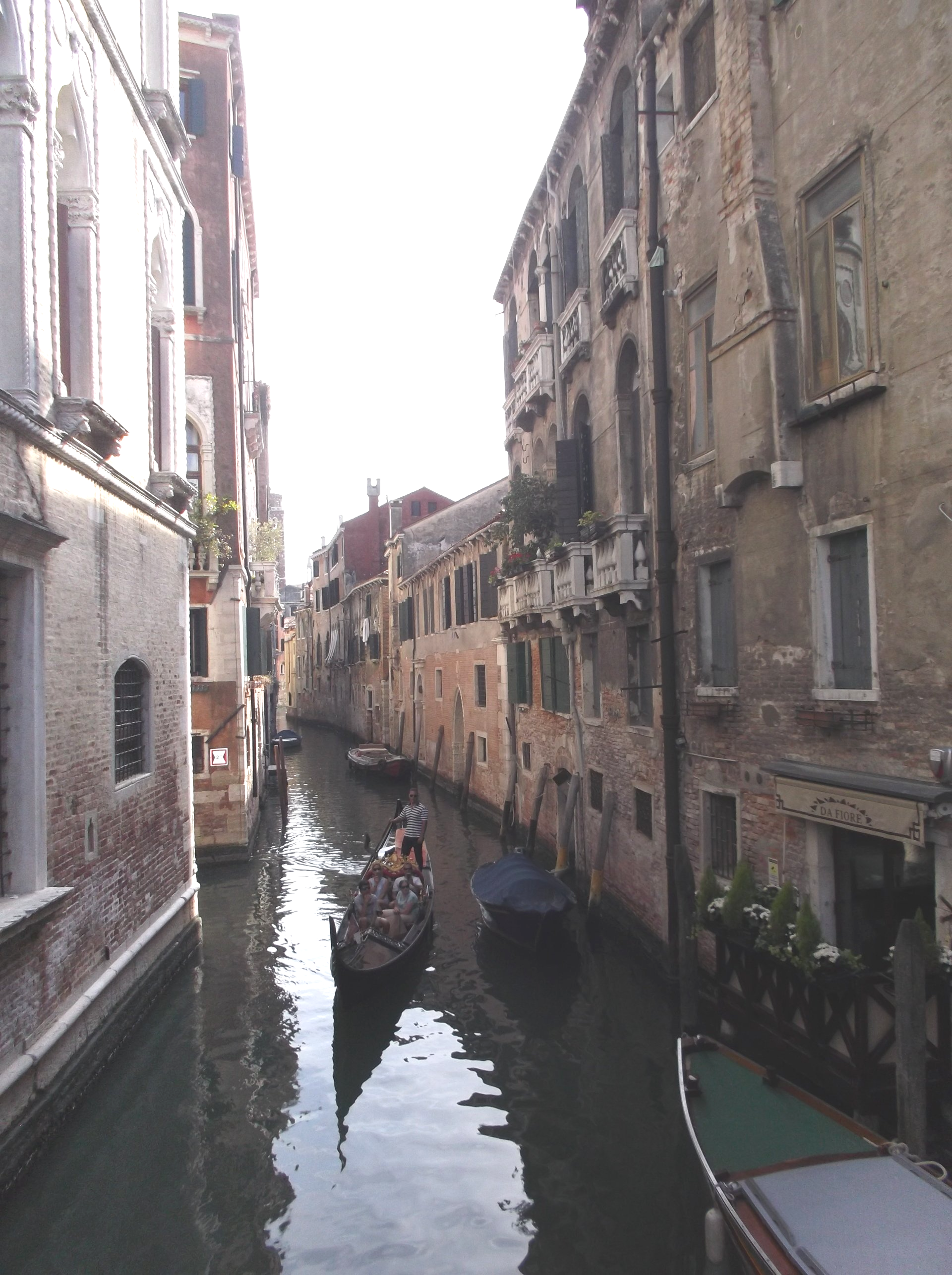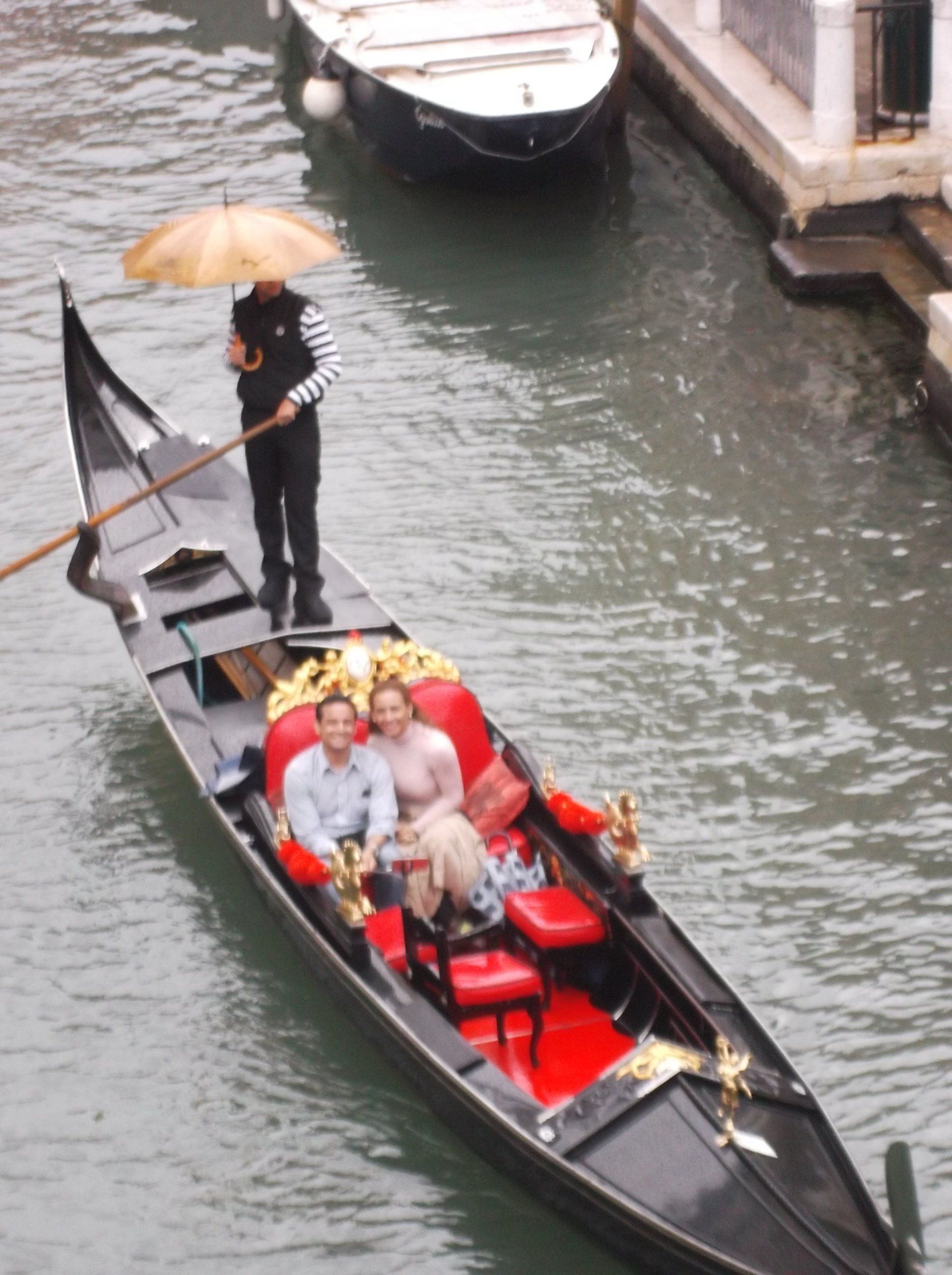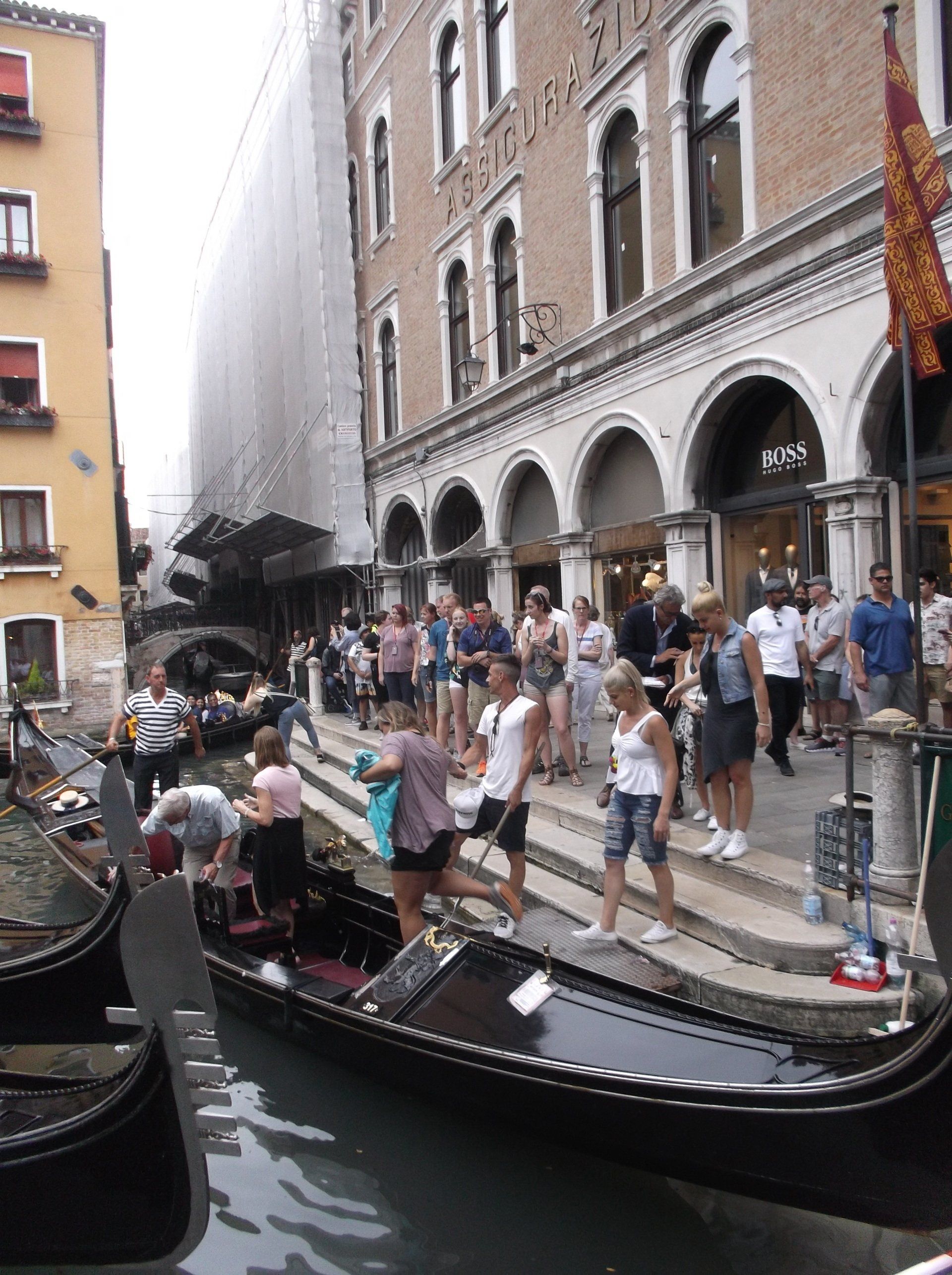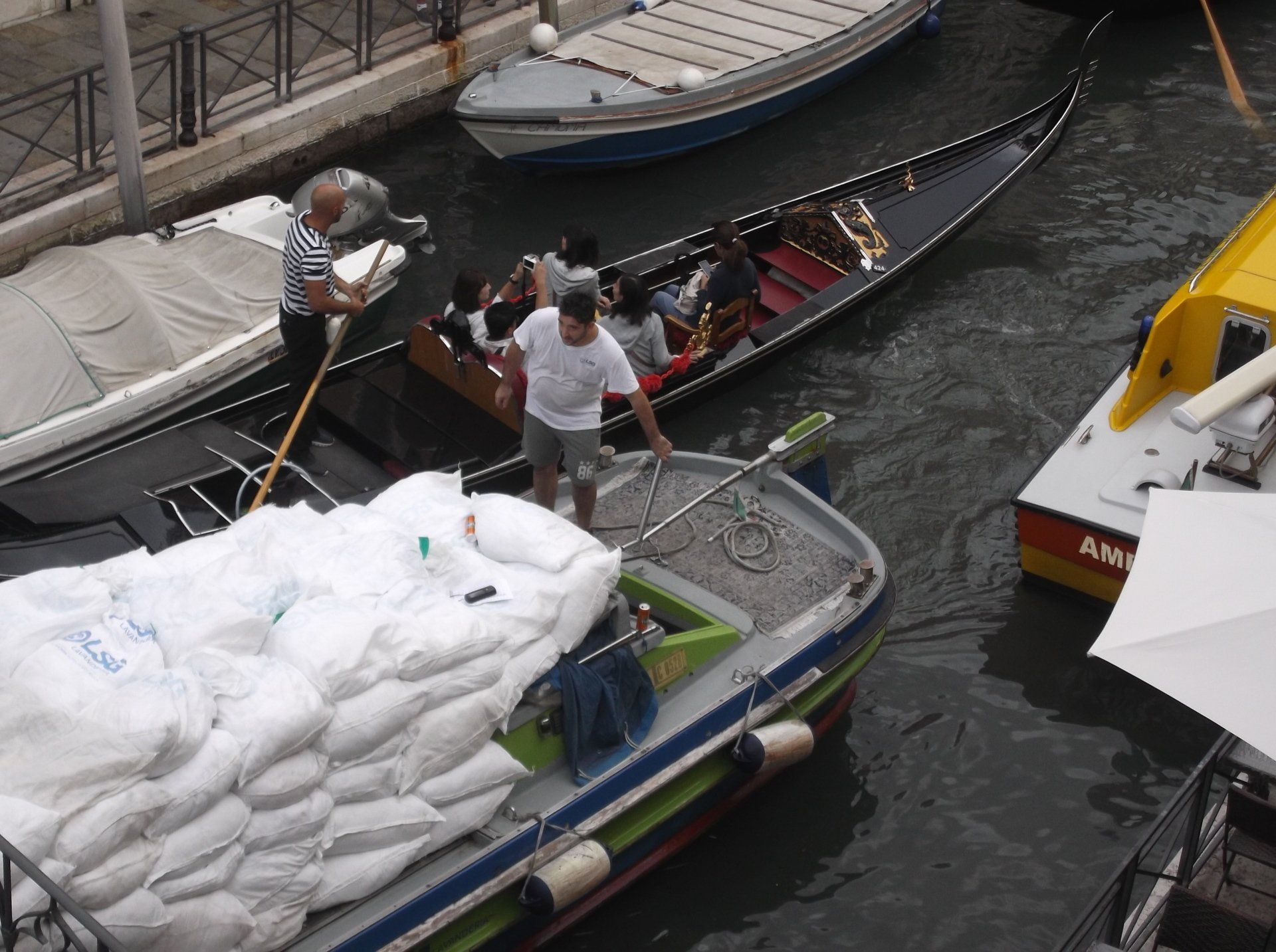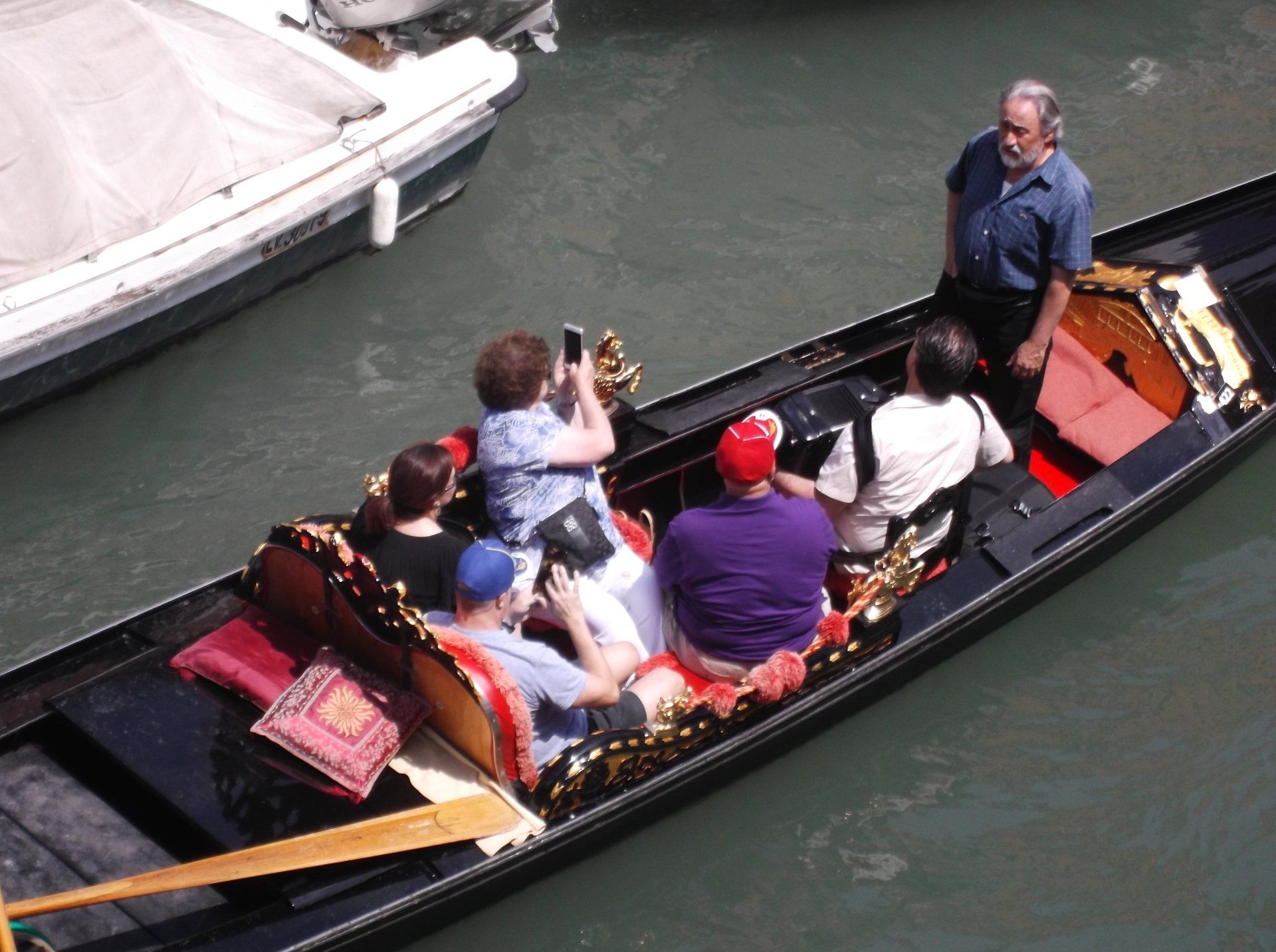THE WORST JOB IN THE WORLD?
Gondolas and Venice are inseparable. Think of one and the other immediately follows.
Romantic images spring to mind: peaceful backwater canals canyoned between silent buildings, a smiling gondolier, perhaps singing, as snatches of accordian music drift in the air. What could be more wonderful?
It rarely happens that way.
Everyone has the same idea, you see, and Venetian gondoliers are hard-pressed meeting the Venice-in-a-gondola dream. Twenty-five million tourists arrive each year, all determined to round out the Venice experience with an hour afloat. For gondoliers, that involves a lot of rowing and a lot of patience.
You can bet there will be photo demands when the ride is done. It's not enough merely to ride in a gondola, there must be pictorial evidence of the event. Me in Venice with my smiling gondolier will be posted to Instagram. Young American women in particular have a fondness for the hug and kiss shot.
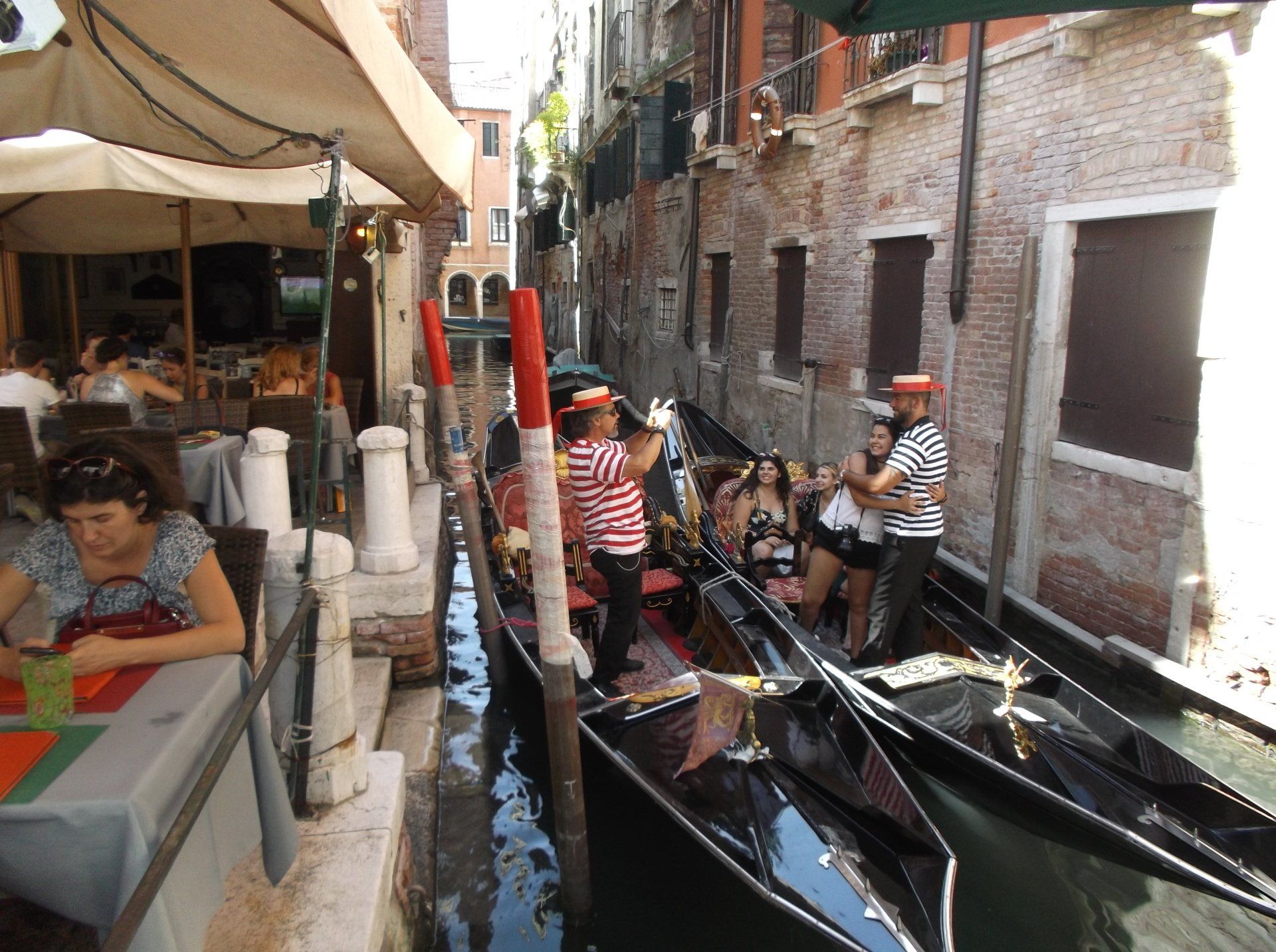
All in a day's work. At least I can settle down with Mario for a few minutes and catch up on emails.

